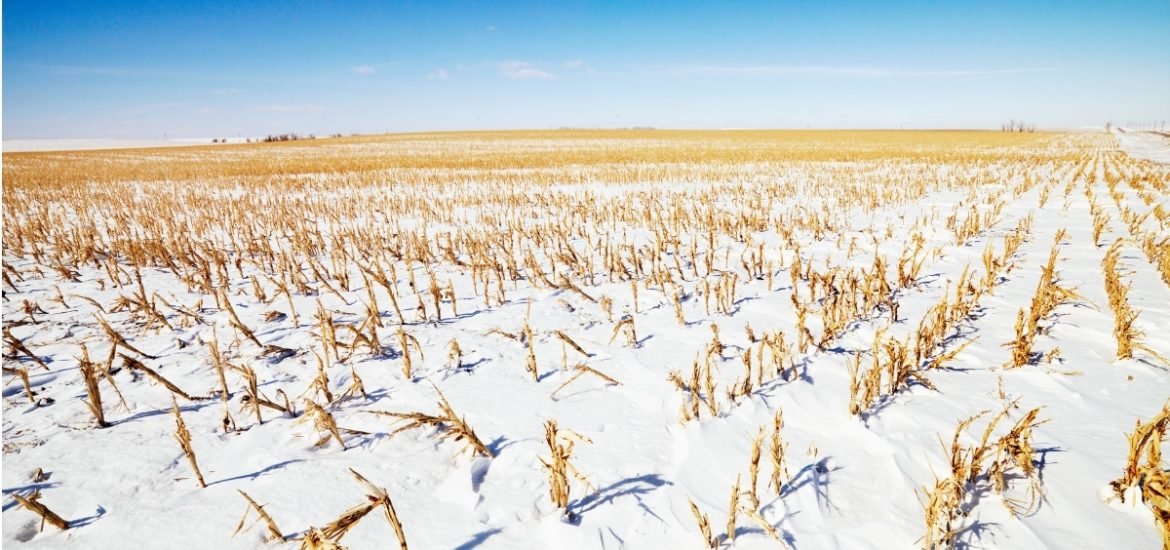
Cover crops are widely used across Europe and North America to reduce soil erosion, promote atmospheric nitrogen fixation, reduce nitrogen losses, and improver overall soil health. Moreover, cover crops have recently gained attention as a valuable tool for mitigating climate change. However, a new study published in September in Geophysical Research Letters suggests certain cover crops may, in fact, be causing “winter warming” in snow‐covered Regions such as those of Central North America (1).
Cover cropping strategies can be used to mitigate climate change by increasing soil carbon sequestration and reducing fertilizer use. Previous studies have demonstrated the positive effects of cover crops on greenhouse-gas fluxes, which can typically mitigate warming by 100–150 grams of carbon per square meter per year (2). In addition, cover crops could potentially mitigate 12–46 grams of carbon per square meter per year over a 100-year time horizon owing changes in surface albedo ― the amount of sunlight reflected off the surface of the field.
To better understand the influence of cover crops on the land surface and atmosphere, researchers from the University of New Hampshire and Cornell University performed advanced simulations using the United States National Centre for Atmospheric Research (NCAR)-based Community Earth System Model (CESM). The team ran a series of simulations to assess a range of crops with different characteristics ― tall, short, leafy, few leaves ― and how these features affect snow cover and temperatures.
The researchers found that leafy cover crops can warm the surface in growing regions of the northern United States and southern Canada by up to 3 degrees Celsius. This mainly occurs when vegetation protrudes above the snow thereby reducing albedo. In other words, whereas as bright snow reflects the sunlight back into space, heat from the sun absorbed by the stems and leaves will instead warm the atmosphere. Furthermore, height tends to matter more than leafiness, but together the impact can be strong.
Overall, the findings suggest that in certain cases, cover crops may actually increase winter temperatures instead of mitigating global warming. This effect was particularly pronounced in areas where the winter snowpack is variable, such as the American Midwest. Therefore, the effects may also be particularly relevant in regions of Europe, where snow cover is highly variable and represents an important component of Europe’s climatic system.
Although cover crops are touted to be an adaptive management tool to maintain yields and minimize nitrogen losses as the climate warms, the authors write, “climate mitigation potential of cover crops may be offset in these regions if cover crop varieties are not carefully selected.” They conclude that “there appear to be few tradeoffs between traditional benefits of cover cropping and the benefits for climate change.”
The findings support previous evidence that cover crops benefit soil quality, water quality, and climate change adaptation and mitigation, but also highlight the need for careful evaluation of current cover cropping strategies to prevent negative repercussions on the global climate. If not properly managed, cover crops could potentially contribute to climate change instead of alleviating it.
(1) Lombardozzi, D. L. et al. Cover Crops May Cause Winter Warming in Snow-Covered Regions. Geophysical Research Letters (2018). DOI: 10.1029/2018GL079000
(2) Kaye, J.P. and Quemada, M. Using cover crops to mitigate and adapt to climate change. A review. Agronomy for Sustainable Development (2017). DOI: 10.1007/s13593-016-0410-x